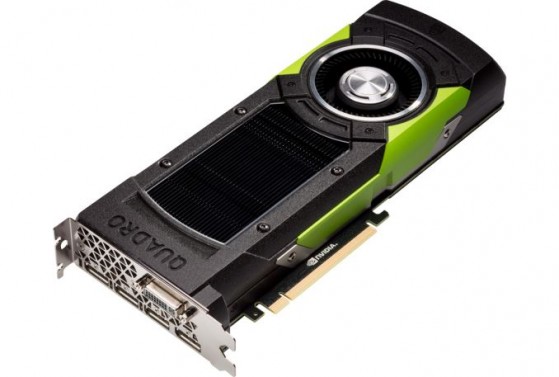Stuff your model into Nvidia’s 24GB frame buffer. In graphics, too much is never enough.
By Jon Peddie
Nvidia has released the M6000, a 24GB workstation graphics board, and says it will give users the performance and on-board memory needed to take on their biggest visualization challenges.
Artists, animators, and editors can work in almost real time on their most complex projects with multiple layers and advanced effects. That much memory will allow product designers and engineers to eliminate a lot of compromise on model complexity or image quality when working on large assemblies. With that much memory, they can now integrate interactive, physically based rendering (PBR) and simulation to evaluate product design and functionality in entirely new ways. Geophysicists can also use it to accelerate their time-to-insight in seismic exploration by holding substantially larger data sets in memory for faster processing and analysis.

It’s that limitation Nvidia hopes to reduce by offering GPU-accelerated iRay, as part of its PBR campaign. But to bring PBR and ray-tracing to an interactive performance level, Nvidia needed more GPU horsepower than it’s had in its Quadro arsenal to date. Nvidia introduced the original M (for Maxwell) 6000 at GTC 2015. The Quadro M6000 is built around the GM200 GPU and using PBR as its showcase application.
The GM200 has 3072 shaders (Nvidia brands them CUDA cores), which is their most to date, and introduces the company’s Maxwell’s microarchitecture.
Nvidia claims the M6000’s initial product had 12 GB of memory like the K6000, though it was able to boost bandwidth modestly, from 288 GB/second to 317 GB/second. A year later, in 2Q16, the company refreshes the AIB, doubling the memory from 12GB to 24GB (retaining all other specs).
Nvidia says all of its Quadro AIBs are certified with a broad range of professional applications, and tested by workstation manufacturers.
What do we think?
One of the main advantages of discrete-based AIB over integrated CPU graphics is the large, dedicated, wide bit-width, and high-speed local memory. It’s what makes games run faster and professional applications realize high productivity, and it’s not something an integrated GPU can ever “catch up” on. As I am fond of saying, in CG, too much is not enough, and in the case of local memory for complex models and rendering, too much memory is not enough—and never will be. To the extent the power supply and packaging will allow it, you will see a constant push by the workstation AIB suppliers to raise the memory size and speed. AMD is pushing that parameter hard and with their high bandwidth memory (HBM) has shown what the future looks like. They will continue that trend with their new Polaris products and have a 32GB professional graphics AIB coming out. Nvidia will seek to match that with their forthcoming Pascal GPU. And combined with the multi-GPU features in DirectX 12 and Vulkan, users never have to worry about when to buy an AIB. You can safely get a M6000 with 24GB today, and next year a Pascal-based AIB with who knows how much memory, and run them together, getting almost twice the bang for the buck. That extends the ROI on a workstation AIB and simultaneously increases performance. Now, if that’s not a great deal, what is?





